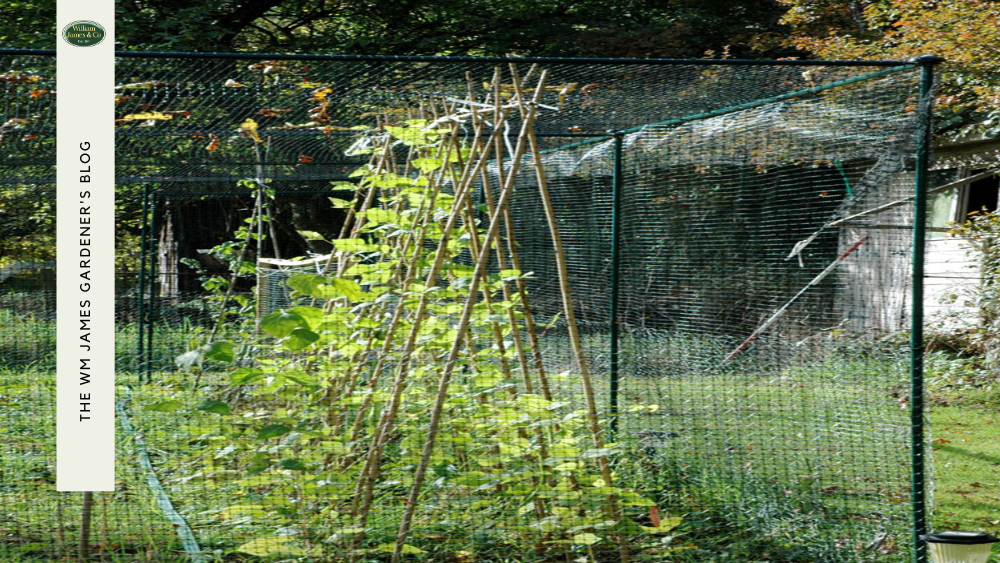We use cookies to make your experience better. To comply with the new e-Privacy directive, we need to ask for your consent to set the cookies. Learn more.
What are Plug Plants: A Guide for Beginner Gardeners
- Admin
- WM James Gardening Blog
- 26 Sept 2024
-
17views

Having trouble sowing? Or maybe you simply haven't got the time to focus on sowing seeds from scratch. Don't worry; we have the perfect alternative that could have you raising a full garden with little stress and effort – plug plants!
But, what are plug plants?
To put it plainly, a plug pant is a young plant. Rather than starting from a seed, plug plants are grown in trays and then transplanted into larger pots or directly into the ground.
For beginner gardeners much like yourself, plug plants are a great option as they require very little maintenance and have a higher chance of successful growth compared to sowing seeds.
If your ears pricked up at 'little stress and effort', keep reading, because we're going to tell you exactly how to grow your own plug plants.
Shop Our Range of Plant Trays & Pots
What are Plug Plants?
As we mentioned, plug plants are young plants that have been started in small trays or modules.
They’re essentially mini versions of fully-grown plants, purchased as seedlings or cuttings. This makes them easier to handle and transplant, as they have already established a strong root system.
Plug plants come in a variety of sizes and types, from flowers to herbs and vegetables.
They’re perfect for gardeners of all levels – but particularly for novice gardeners – as they require minimal effort and can be grown in a variety of settings, whether that be small balcony gardens or large gardens.
Why are Plug Plants Popular?
|
Plug plants are highly convenient compared to sowing your own seeds. If you don't have the time to garden from scratch or are struggling with germination at home, you can still raise perennials, flowers, and vegetables in your own space.
Caring for young seedlings can also be a lengthy process that requires regular attention. Plug plants cut all this out, so you can focus on growing for a bountiful harvest!
Plug plants are also an economical alternative to buying fully grown specimens, which can be quite costly.
It's also helpful that they can be purchased online and delivered to your home.
With minimal effort, you can still create an impressive garden full of colour and homegrown produce. Why would you not want to start growing plug plants?
What Size are Plug Plants?
Of course, as with all plants, they come in varying sizes. They often fall into one of three categories, 'mini plugs', 'standard plugs', and 'garden-ready plugs'.
| Mini Plug Plants | Standard Plug Plants | Garden-Ready Plug Plants |
| Mini plug plants are the smallest option, usually measuring between 1-6cm* | Standard plug plants are slightly larger, measuring between 4-6cm* | Garden-ready plug plants are the largest option, usually measuring above 8cm* |
*It's important to note that these sizes can vary depending on the species of plant and where you purchase them from.
Read on below for more details on each of these…
Mini Plugs
The youngest of all plug plants; the mini plug needs the most attention and care. If they have tended to young plants before, more experienced gardeners are likely to use them for their vegetable plants or flower beds.
They also happen to be the cheapest if you're gardening on a budget.
Mini plugs are ideal for those with limited space, as they can be grown in small containers or even on a windowsill.
Once you have your mini plug (they're usually available by early spring), it would be best to repot them and let them grow undercover inside before moving them to the garden.

Standard Plugs
Standard plugs are slightly bigger than their former mini plugs, but they may still need a bit more time in their cells before being taken outdoors.
Due to being slightly older, they require less attention, so they could be an option for intermediate gardeners who are slightly more comfortable raising plants and looking to expand their gardening skills.
With standard plugs, you can choose from a wider variety of plants that may not be available as mini plugs.

Garden-Ready Plugs
Although they’re the most expensive of all the plugs, garden-ready plug plants will save you the most time from planting to full growth.
Depending on how well-established they are, you may be able to plant them straight into the garden. But even if they need more cell growth, it won't take long until they're garden-ready.
Check Out Our Planting Tools to Help With Your Garden-Ready Plugs
Garden-ready plugs are a great option for beginners.
How to Plant Plug Plants: Our Step-by-Step Guide
What You'll Need
|
Step 1: Check Your Plants
Once you receive your plug plant, it's time to work quickly.
Check over your plants. If they look dry, soak them for half an hour and keep them in a cool, bright place until you're ready to pot them.
Step 2: Get Your Plants Ready
Garden-ready plugs can be planted straight away. This may be in a container, hanging basket, vegetable patch, or garden feature. They still need to be acclimatised, but we'll get into that later.
If you're not sure where to plant your new garden-ready plug plants, check out our Haxnicks Raised Bed and Frame with Covers. It's easy to assemble, perfect for smaller outdoor spaces, and has a life span of at least 5 years.
However, mini and standard plug plants take a different route. First, prep your small pots.

Step 3: Prep the Plant Pots
Fill your small pots with compost and make a hole bigger than the plug. Consider using our Professional 12 Pot Seed Growing Tray and Pots, which are made from recycled and recyclable plastic.
You should also use good-quality compost. Watch The RHS’s ‘How To Compost’ video to learn how to make your own.
Our Burgon & Ball Compost Scoop promises mess-free scooping when transferring to different containers- wouldn’t that be handy!
Step 4: Loosen the Plug Plants
Loosen the plugs from their tray by pushing up from the bottom with a pencil or our Burgon & Ball Dibber, endorsed by the Royal Horticultural Society.
Step 5: Plant Your Plugs
Carefully place the plug into the hole and firm the soil around the plant's root.

Step 6: Water, Water, Water!
Water the plants well. Daily watering could not be easier with our 10-Litre Plastic Watering Can with Rose Attachment, a perfect addition to any gardener's equipment.
Step 7: Acclimatise Where Necessary
Place your pots in a cool, bright place until they are ready to be acclimatised. Acclimatisation should be carried out at least a week before planting outdoors. The easiest way to do it is to place them outside during the day and inside at night.
Troubleshooting: Why Are My Plug Plants Dying?
Plug plants are still young, so are not yet the hardy plant they hope to be. This means you have to watch the way you water them, or you risk them dying an early death.
Young plug plants need to be kept moist, but they don't like sitting in water for long periods, as this can cause root rot.
The easiest way to check is to touch the soil with your finger. If it's damp, there is no need for watering. If it feels dry to the touch, it may be thirsty.
Plug plants also crave light and should be kept at a minimum of 7 degrees celsius. If you have nowhere suitable, our Potting Store is a beautiful dual-functional building. One-half storage area, one-half greenhouse, and a potting bench is even included!
A Final Word on Plug Plants
If you've been unsuccessful with sowing and feel disheartened, we hope we've convinced you to consider plug plants this season. Who knows, maybe they will give you the experience you need to try sowing again!
Plug plants also provide beginners with the opportunity to have a vibrant garden full of life without needing expertise. It's a brilliant starting point, and we hope you enjoy raising your own plants.
Make sure you have the right sowing tools to get started on growing your own plug plants – you can explore and shop our full range below!
Shop Our Full Range of Sowing Tools Here!
FAQs
Are Plug Plants Worth Buying?
Yes. They are cost-effective, a little more expensive than seeds, but they have a higher survival rate, making them more cost-effective in the long run.
Do I Need to Harden Off Plug Plants?
Plug plants will need to acclimatise before they are permanently moved outside.
What Should I Do When I Receive My Plug Plants?
Unpack them as soon as possible, and ensure they are not dry. If they feel dry, soak them in water for half an hour.
Can You Put Plug Plants Straight Into a Garden?
Garden-ready plugs can indeed be planted straight away, but standard plugs will need to be potted and grown for around a month before planting outdoors.
How Do I Revive a Plug Plant?
If you have ordered plug plants online or bought them from a nursery and they’re looking a little droopy upon arrival, it’s very likely they just need a good drink! Water and moisten the soil and they should soon perk up.












